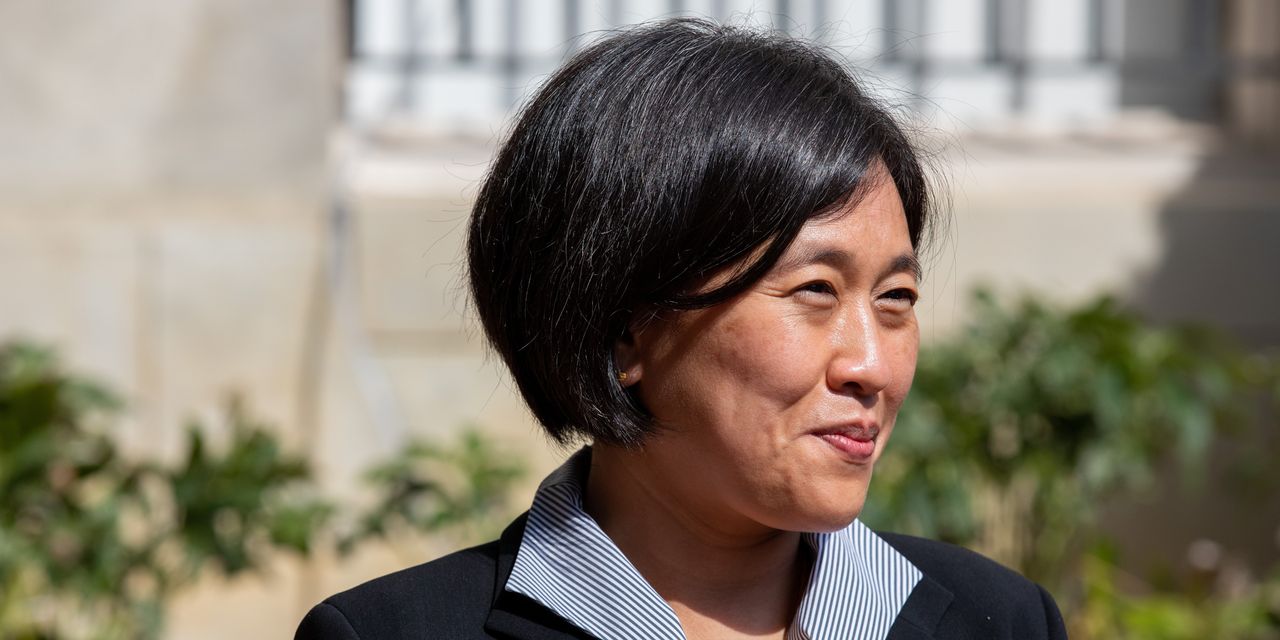
WASHINGTON—The Biden administration will begin unveiling its China trade policy next week following what it has called a top-to-bottom review of import tariffs and other measures imposed by the Trump administration.
U.S. Trade Representative Katherine Tai is scheduled to speak on the administration’s trade policy in a speech to a Washington think tank Monday morning, in a first step toward addressing a range of unresolved issues between the U.S. and China, nearly nine months into the Biden presidency.
Business groups have been pressing the Biden administration for clarity, including whether the White House plans to start negotiations with Beijing on a follow-up to the Phase One trade deal struck in January 2020 and on whether tariffs on Chinese imports will continue.
“We need to ask ourselves, do we really want those excess tariffs in perpetuity,” said Craig Allen, president of the U.S. China Business Council, a trade group that represents American companies with large Chinese operations. Mr. Allen said he has been concerned that the Biden administration has been comfortable leaving so many tariffs in place for so long. “It’s going to warp the U.S.-China relationship in perpetuity,” he said.
Since taking office in March, Ms. Tai has largely sidestepped questions about China by deferring to the administration’s review process. She has said that she would work within the parameters of the Trump administration’s Phase One deal, which included a yet-to-be-tested mechanism for enforcement if a country is coming up short on its commitments.
Ms. Tai’s remarks at the Center for Strategic and International Studies in Washington are likely to be her most detailed assessment of China strategy, although many specific policies have to be implemented via the regulatory process and may not be fully fleshed out in a speech.
The Trump administration imposed tariffs on nearly $370 billion in imports from China beginning in 2018. The Biden administration has yet to touch those tariffs, although the levies no longer have the impact they once did.
Importers have shifted to goods from China that weren’t hit by tariffs, and as of earlier this year the tariffs only covered about $250 billion in trade.
Many U.S. importers—who pay the tariffs—have been angered because they haven’t been able to apply for relief from the duties. The Trump administration had created a process by which U.S. importers could apply for exclusions.
The Biden administration allowed this process to expire, however, saying that it must conduct its review. That left many companies in a situation where they were forced to pay tariffs but their Chinese competitors weren’t.
SHARE YOUR THOUGHTS
Has your business been affected by the U.S.-China trade relationship? If so, how? Join the conversation below.
Another issue to be resolved is the extension of China’s commitment to purchase U.S. goods. A centerpiece of the Phase One trade deal was Beijing’s promise to boost its purchases of soybeans, corn, meat, energy products and manufactured goods.
The pact called for China to increase purchases of goods and services by an extra $200 billion over the course of 2020 and 2021. China missed the goal for goods purchases by nearly 40% in 2020, according to calculations from Chad Bown, a senior fellow at the Peterson Institute for International Economics who has been tracking the effort. With four months to go in 2021, China is on pace to be 30% short of its goal.
The economic disruption caused by the coronavirus pandemic made the goals far more difficult to reach than anticipated. Thus far, there has been no consequence for China for missing the targets by such a wide margin.
The Phase One deal contained specific goals for 2020 and 2021, meaning that aspect of the deal effectively expires at the end of this year.
“I’m not convinced that the purchase-commitment approach had much influence on China,” said Mr. Bown. “After nearly two years, it looks like China bought what it needed—a lot of farm products and semiconductors—but it didn’t buy a lot of airplanes or cars that the Trump administration wanted it to.”
One area where the Biden administration has highlighted its dissatisfaction is China’s policies toward intellectual property. In an April report, the USTR said that China must do more to protect U.S. intellectual property. While China has changed a number of its intellectual property laws in accordance with the deal, it has also adopted new tactics that critics say threaten to once-again undermine U.S. patents.
The Trump administration had called its deal Phase One with the stated reason that the two sides would quickly begin negotiating over a second phase. But nearly two years later, no such negotiations have begun.
—Yuka Hayashi contributed to this article.
Write to Josh Zumbrun at [email protected]
Copyright ©2021 Dow Jones & Company, Inc. All Rights Reserved. 87990cbe856818d5eddac44c7b1cdeb8








